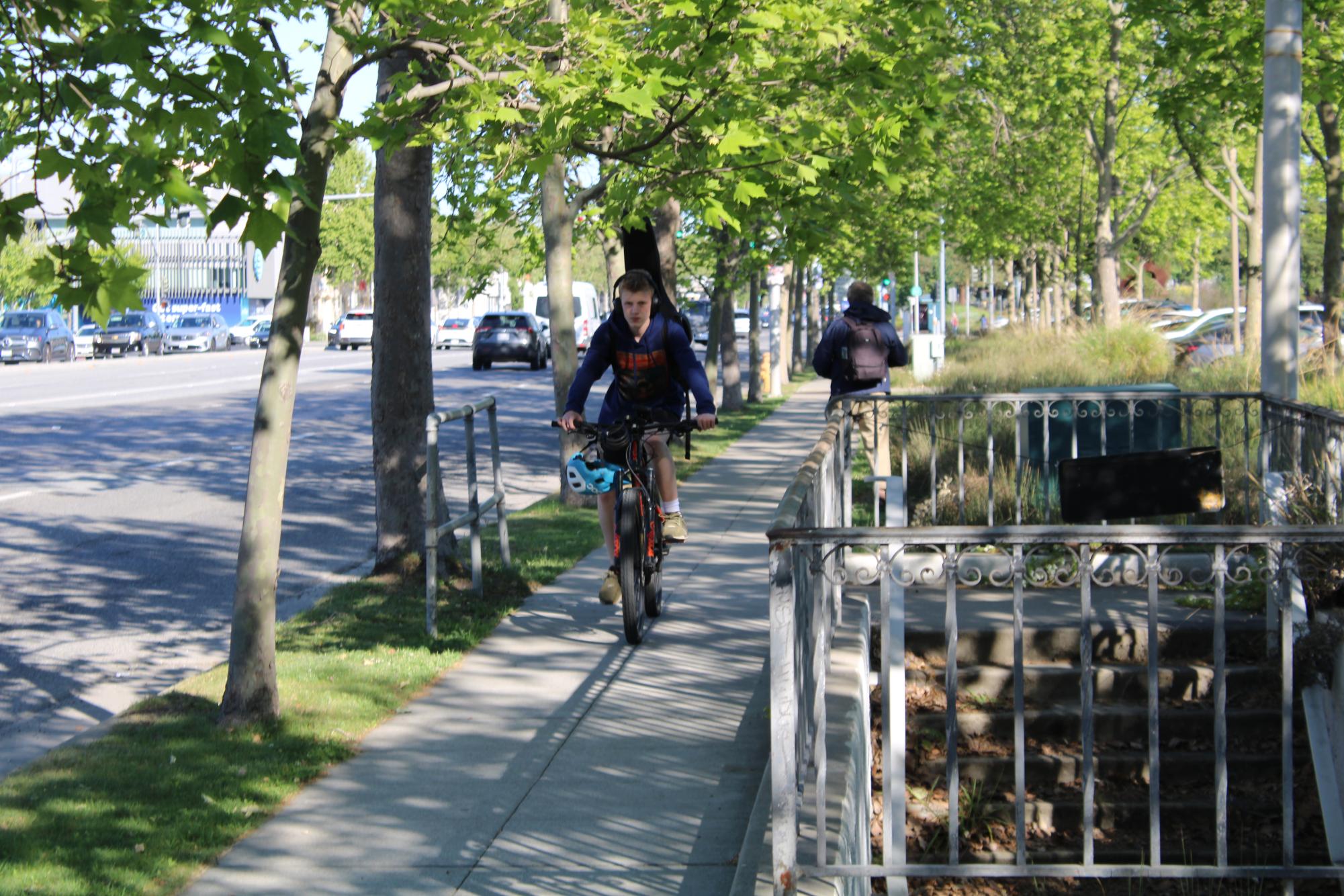Expected to finish in the fall of 2025, the California Department of Transportation’s, also known as Caltrans, SR-82 Pavement Rehabilitation and ADA improvement project will repave and improve El Camino Real for the approximately seven miles of roadway between State Route 237 in southern Mountain View and Sand Hill Road near the northern border of Palo Alto. Branch Chief of the District 4 Caltrans Office of Public Affairs, Pedro Quintana, said an evaluation of the current quality of the road prompted Caltrans to undertake the project.
“The paving project is a capital project under the State Highway Operation and Protection Program, a ‘fix-it-first’ program that funds the repair and preservation, safety improvements and operational improvements on the State Highway System nominated and programmed based on the pavement needs,” Quintana said.
The plan also involves adding bike lanes to the selected roadway segment. Other improvements to the roadway, as Quintana said, feature the use of alternate paving materials, more visible crosswalks and upgrades to curbs in compliance with the Americans with Disabilities Act.
“Rubberized asphalt concrete, as a new paving material, was selected to meet the Department’s sustainability and recycling goals, commonly specified to retard reflection cracking, resist thermal stresses created by wide temperature fluctuations and aid in incremental noise reduction,” Quintana said. “Capital Preventative Maintenance projects comply with the Americans with Disabilities Act by reconstructing curb ramps to meet current accessibility standards and adding missing curb ramps required for pedestrian access.”
The bicycle lanes will vary in standards from Class II to Class IV, which range from painted to physical separations. Caltrans’ current proposal also eliminates parking spaces along the road instead of taking space away from the high-speed vehicular traffic which can pose dangers to cyclists.
However, members of the Palo Alto City Council expressed concerns with the plan’s approach to bicycle safety and on-street parking, and at its April 1 meeting, voted to have Caltrans return with an updated plan at a later meeting.
A Council-funded study Fehr & Peers, a transportation consulting firm, identified several issues with the plan, including the decision not to cut back traffic lanes, the conflict between public transit bus stops within bike lanes and the remaining danger while crossing intersections.
Philip Kamhi, Chief Transportation Official for Palo Alto, said the City Council remains in contact with Caltrans to fix these problems.
“Mayor Stone appointed Council Members Ed Lauing and Pat Burt to review work plans and discuss Caltrans’s schedule,” Kamhi said. “Concurrently, efforts are underway to arrange a meeting between Caltrans, ensuring alignment in our complete street goals, following a Safe Systems Approach and relevant Caltrans design standards.”
In addition to safety concerns, while some studies have shown that replacing parking spots with bicycle lanes tends to boost business, they have also found the impact can vary depending on the type of business — grocery stores suffer and restaurants thrive. Cycling club adviser Natalie Docktor said finding alternative routes to improve bicycle safety might work better for both cyclists and businesses.
“I feel that El Camino is too busy for bikes,” Docktor said. “I also think businesses need parking to stay in business. It would be best to find a parallel street and create a bike lane possibly next to the train tracks.”
Besides parking for businesses, the spots along El Camino Real also serve as residences for an unhoused population of about 41 people dwelling in RVs and other vehicles, according to a City Council Staff Report. Caltrans’ proposed plan would give the county “Continuum of Care” a single, 72-hour notice before the California Highway Patrol tows vehicles housing people.
But instead of pinning the responsibility to contact unhoused individuals on the county and city governments, Kamhi said this responsibility should fall on Caltrans.
“The city sent a follow-up letter to Caltrans in response to recent meetings and questions from Caltrans staff regarding the outreach and notification plan from Caltrans to vehicle dwellers,” Kamhi said. “As of April 23, 2024, the city has not received a response to this letter from Caltrans.”
Overall though, Quintana said Caltrans remains open to these suggestions and will commit to making the project work at its best.
“Caltrans appreciates the City’s review of the draft plan and recommendations,” Quintana said. “Caltrans will carefully consider these suggestions alongside the project status and the impact on adjacent segments. Ultimately, our goal remains to develop a plan that prioritizes a safe and multimodal transportation system for all communities.”


